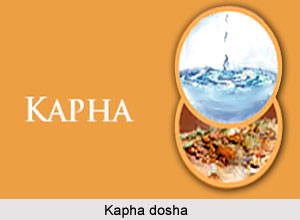 Kapha that is formed from the elements water and earth manifests in five centers and through these it influences the entire organism. The five waters of Kapha are: kledaka, avalambaka, bodhaka, tarpaka and slesaka.
Kapha that is formed from the elements water and earth manifests in five centers and through these it influences the entire organism. The five waters of Kapha are: kledaka, avalambaka, bodhaka, tarpaka and slesaka.
Kledaka is the water of the stomach. Kledaka originates in the stomach. It is the cause of mucus formation in the body. Kledaka`s moist foamy liquid helps in digestion, liquefies foods and nourishes the remaining waters of Kapha. When the first water is aggravated, the digestion process becomes weakened. The abdomen becomes heavy that may lead to nausea.
The second water of Kapha is avalambaka that resides in the chest and heart. It provides a fluid tissue covering to the heart thereby protecting the heart & acting as a shock absorber. It also provides the limbs with energy. When avalambaka is disturbed it brings in laziness. Rheumatic fever and pains in the pericardium may occur.
Bhodhaka is the third water of Kapha. It joins the five waters of body`s river. It sends water to the tongue and palate and gives the insight of taste. It registers each of the tastes in nature and sends the appropriate impulses to the receiving tissue long before the food is swallowed. Bodhaka liquefies the food. When this is disturbed, crimes against the body`s natural instincts are committed. This creates foul undigested remnants of food which stick in the tissues and promote diseases like obesity, bulimia, and anorexia.
Tarpaka is the fourth water of Kapha that flows in the brain and spinal cord. It soothes the sense organs thereby protects the nervous system. When this is in imbalance the sense organs become impaired that results in memory loss and dullness of sensory perceptions.
The fifth water is slesaka that is located in the joints. It lubricates the joints thereby giving them solidity. Slesaka`s oily gel protects the joints from heat thereby making ti flexible to move. If slesaka is impaired, the joints may become swollen, painful and dysfunctional.
This article is a stub. You can enrich by adding more information to it. Send your Write Up to content@indianetzone.com




















